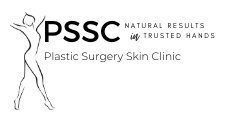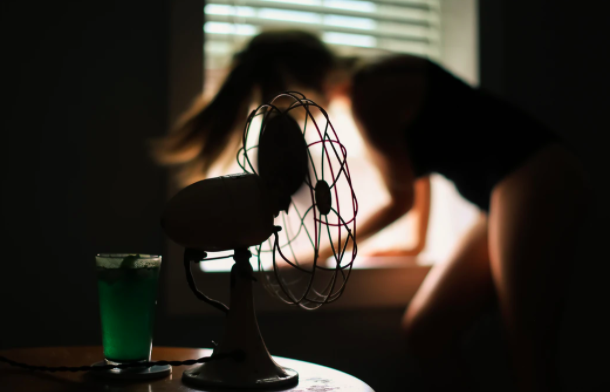Heatwaves in Newmarket, downtown and the GTA seem to be getting hotter, more frequent, and lasting longer. Warnings to stay indoors to avoid heat exhaustion and heatstroke are also becoming the new norm. But of course, all too often we ignore the potential risks intense heat can have on our skin.
Today, we take a look at how to protect your skin during a heatwave, and what to do when a heatwave causes unintentional but potentially dangerous skin damage.
What are Skin Risks During a Heatwave?
During a heatwave, high temperatures put us at risk of dehydration, drying out our skin and increasing the risk of sunburn.
These effects can cause both short and long term skin damage. Dried out or burnt skin causes premature wrinkling, discolouration, and can increase the risks of skin disorders like eczema and psoriasis.
Heatwave skin risks are not limited to cosmetic problems. There is also an elevated risk for skin diseases like melanoma. Early signs of melanoma include sores, pigmentation, itchiness or pain, and changes in the shape or texture of existing moles.
If you believe you are experiencing any of these symptoms, it is worth visiting a medical professional.
What Can You Do to Prevent Sun Damaged Skin?
Being proactive can truly help keep you and your skin safe during a heatwave. Here are a few quick tips to prevent sun damage.
- Check The UV Index: It’s important to get out and enjoy the sun, but it’s just as important to practice sun safety. Understanding the UV index can go a long way.
- 0-2: A low index reading with lower risks of sunburn. Wear sunglasses, apply sunscreen. Burns can happen within 60 minutes of exposure.
- 3-5: Moderate risk of sunburn, it’s best to avoid direct sunlight during peak hours, from 10 AM to 4 PM. Apply sunscreen every 2 hours, as burns can occur in 30-45 minutes.
- 6-7: High risk of sunburn. Avoid sun exposure during peak hours. Sunburn can occur in as little 15 minutes.
- 8+: From 8-10 UV there is a severe risk of sun damage to the eyes and skin. Burns can happen in under 15 minutes. With any UV index above 10, it is recommended to stay inside if possible.
- Sunscreen: No matter what the UV index is, sunscreen is always an important way to protect your skin. Be sure to reapply as needed, even on cloudy days.
- Stay Inside at Peak Exposure Times: The day is typically at its hottest from 10 AM to 4 PM. In this time period, there is the greatest risk of sun exposure and potential damage. It’s best to save outdoor activities before or after this time. If you are outside, take extra precautions and try to seek out shady areas.
- Limit Exposure: In addition to staying in the shade, what you wear can have a big impact on protecting your skin. Hats, long sleeves and protective fabrics help to reflect harmful UV rays off of your skin.
- Use Moisturizing Skin Products: A heatwave can rob your skin of the moisture it needs to stay healthy and youthful-looking. Applying moisturizing products can nourish and replenish your skin, improving appearances and reducing the risks of sun damage.
- Eat Right: Choosing foods and supplements that improve skin health can reduce your risks. A tasty treat like watermelon can help with hydration, while Vitamin D supplements can reduce sun damage. Try to avoid alcohol during intense heat as it can dry you out, leaving you vulnerable to skin damage or heatstroke.
How to Repair Sun-Damaged Skin
For many of us, especially those who are active outdoors, avoiding skin damage from the sun can be hard to avoid. Even if you follow all the right practices.
Fortunately, there are reliable, proven treatments for the most common types of sun-damage.
Wrinkles & Fine Lines
Besides natural aging, wrinkles and fine lines are often the results of sun exposure. Treatments like laser resurfacing and Fractora skin rejuvenation can fade away those marks in just a few sessions. They help to rejuvenate and skin, repairing sun damage and providing firmer tone.
Improvements are visible immediately after your first treatment and continue to improve over the next few weeks.
Sun Spots
Sun spots, or liver spots, are flat brown spots that pop up after too much sun exposure. Even though they are typically harmless, most of us prefer to remove them. Broadband Light treatments (BBL) use pulsed light therapy to repair sun spots with even texture and tone.
Blemishes
For minor blemishes, you can repair sun-damaged skin with micro laser peels or chemical peels. Peels remove the outer layer of damaged skin, revealing a layer of healthy, smooth skin.
Although low-quality chemical peels are available in stores, it’s best to visit a plastic surgeon for this treatment to ensure you get the right level of peel for your skin and the proper application.
Repair Sun-Damaged Skin at PSSC in Newmarket
If you are suffering from sun-damaged skin, book your consultation at Newmarket’s Plastic Surgery Skin Clinic. You will meet with an experienced surgeon who can evaluate your skin and provide you with the right treatment options for you and your body.
Schedule a consultation today!

